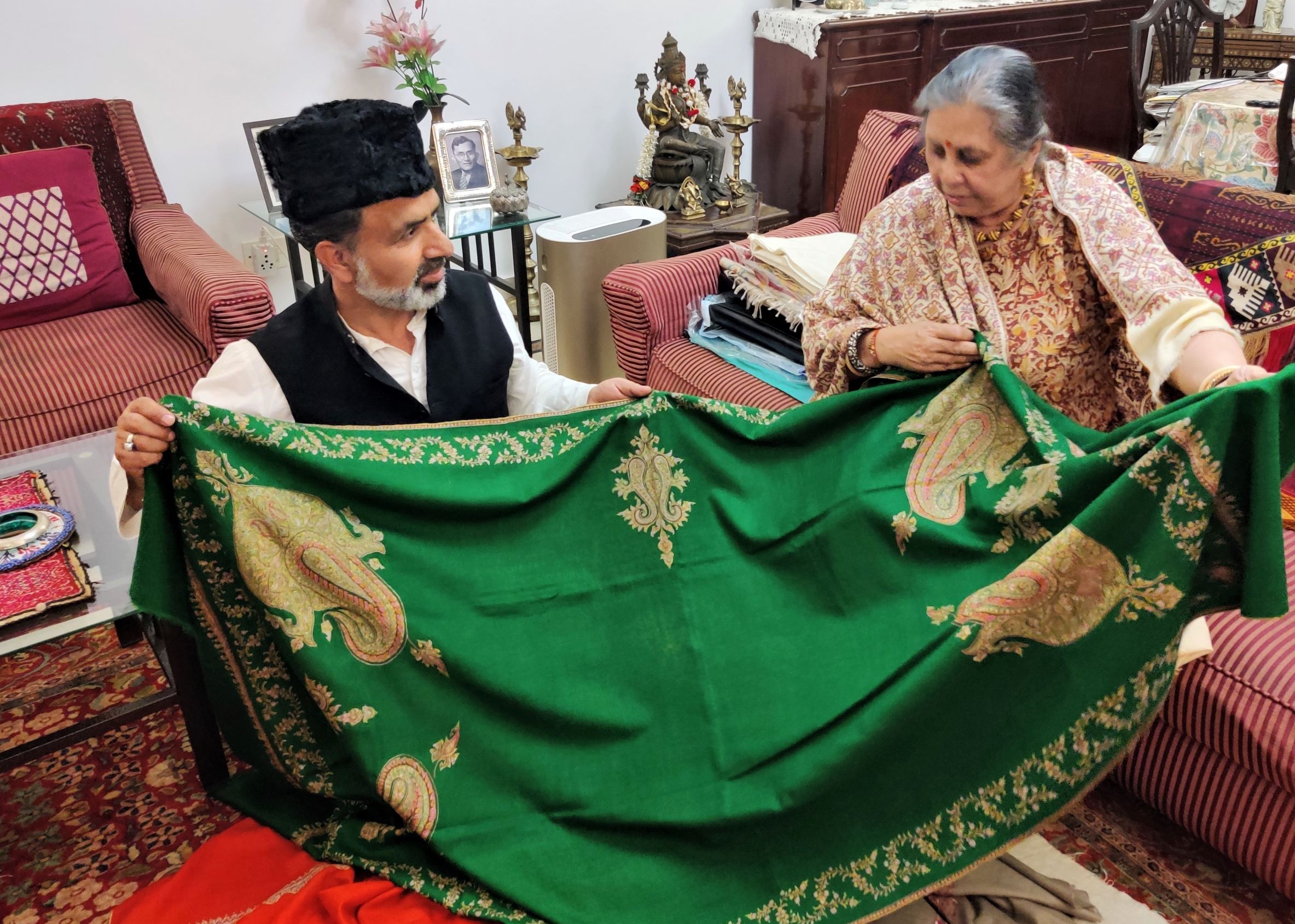
Map of Shawl Trade Routes

With Armenian Collector George Anavian

New York Flea Market

Doyle Auction House, New York
Kashmir shawl was one of the most precious and unique items of textile art and craft that needed substantial investment of time, labour and resources and on which many people depended for their living. Till mid-18th century they enjoyed royal patronage and were given as items of gift that conferred prestige on the receiver and the giver. Once they came into private manufacture, they became traded goods that were in demand all over India and the world. Every buyer became interested in the market value and the price; and seller in the profit. Weavers were exploited and 30% taxes were imposed as every ruler tried to earn maximum revenue from this highly prized item. By early 19th century, due to British policy, a wealthy zamindar class emerged in North India which became a major buyer of fine shawls, followed soon by the rich merchant class. From early 20th century, shawl vendors went door to door selling shawls and each wealthy family had their Kashmiri shawlwallah.
From cooperation among Kashmiri and Najibabadi merchants, secrecy, intrigue and unscrupulous competition became key aspects of shawl business involving old kani shawls after 2010. One of the main reasons was the rising affluence and a demand for fine shawls. Increased demand led to an exponential growth of Punjab’s shawl industry in Amritsar and Ludhiana based on huge imports of Jacquard machines and machine spun wool and pashmina from China, Australia, New Zealand, Nepal. Many designs and varieties of machine-made pashminas, kanis, toosh, designed wool and viscose shawls were made in hundreds of thousands for domestic market and export since 1995. In India, viscose, Merino wool and silk blend soft shawls are still sold in markets to customers with little or no knowledge, as pure pashmina. This and other socio-political factors have nearly killed the handmade kani shawl industry in Kashmir, for a kani shawl that costs a lakh, its copy in fine wool and choicest designs costs a few thousand. It is easily affordable. Its synthetic versions cost a few hundred. The most tragic impact of this has been the poisoning of Punjab’s rivers with acid that is used to burn loose threads at the back of the machine woven shawls.
Buying because you love shawls is different from buying as an investment. I became a passionate collector of vintage shawls and spent decades learning about them mainly from the Najibabadi rafugars and vendors, but also from books and Kashmiris who were themselves weavers and manufacturers. I bought from shawl vendors, flea markets, collectors, auctions, vintage textile shows, antique and carpet shops run by Armenians from Iran, vintage textile shows and stores in the UK, in Europe and America, and visiting bazars in countries like Pakistan, Turkey, Iran, Syria, Uzbekistan and Russia. I did not think much about the price, if I had the money, I bought the piece that I really liked. Later I sold some to buy what was missing in my collection. I got cheated badly in America by a big name. In short, I found buying and selling a mysterious game as its rules keep changing with the times.

Shawls being packed for shipment

My Kashmiri shawl vendor Bashir

Khyala Haat Flea Market, Delhi

Najibabad antique shawl trader family
